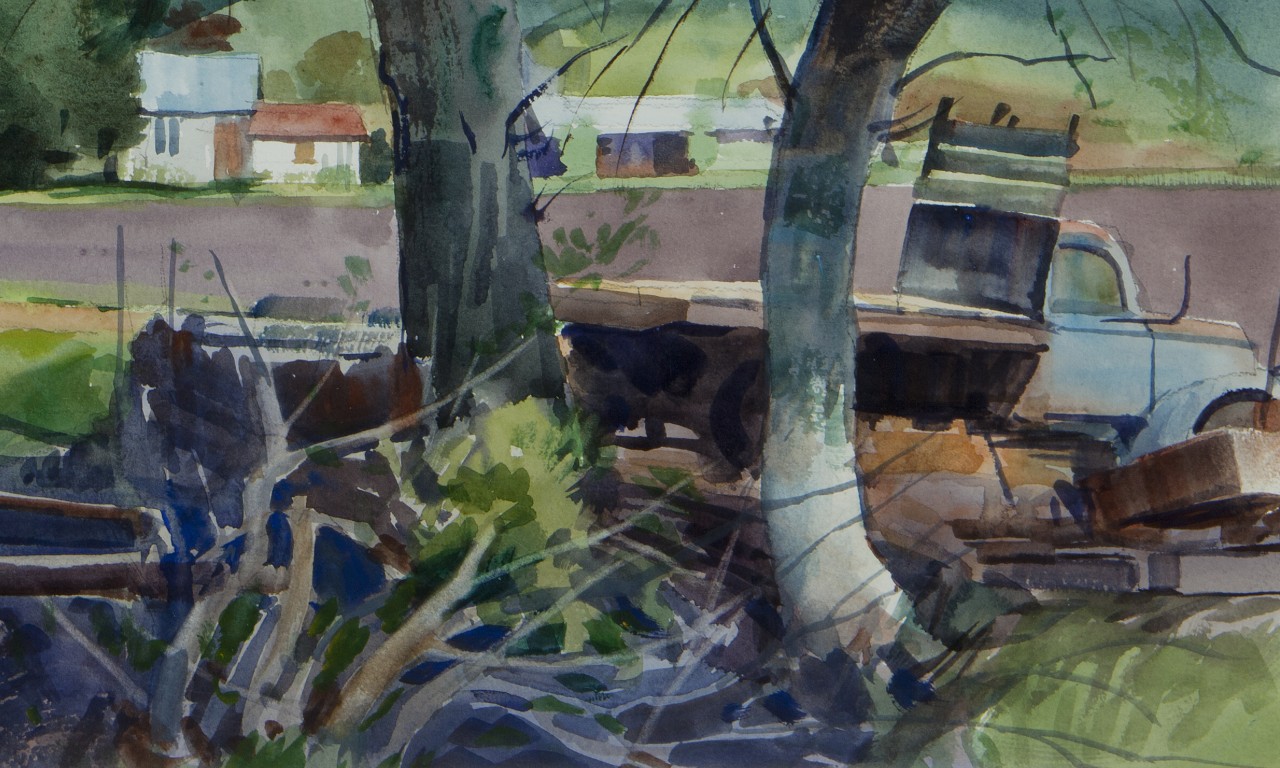 |
Detail of 2018.6.9
Ann and Bill Cullen Memorial Collection |
Georges Paint Gorgeous Gorges
Posts about artists in the Ann and Bill Cullen Collection have come in staggered bursts since the bequest was first received back in the late summer of 2018, but we once again find ourselves with a suitable cause to look at this donation as an exhibition dedicated to the subject, Artistic Legacy: The Ann and Bill Cullen Collection, opened this past Saturday. In selecting another of the 16 artists in the collection to feature, we have skipped past George Post—about whom we would have to write a bewildering George Post post—to highlight the collection’s other George, surnamed Gibson. Herein we look at George Gibson’s life, works, and the relationship of the California Watercolor Style painter with Hollywood.
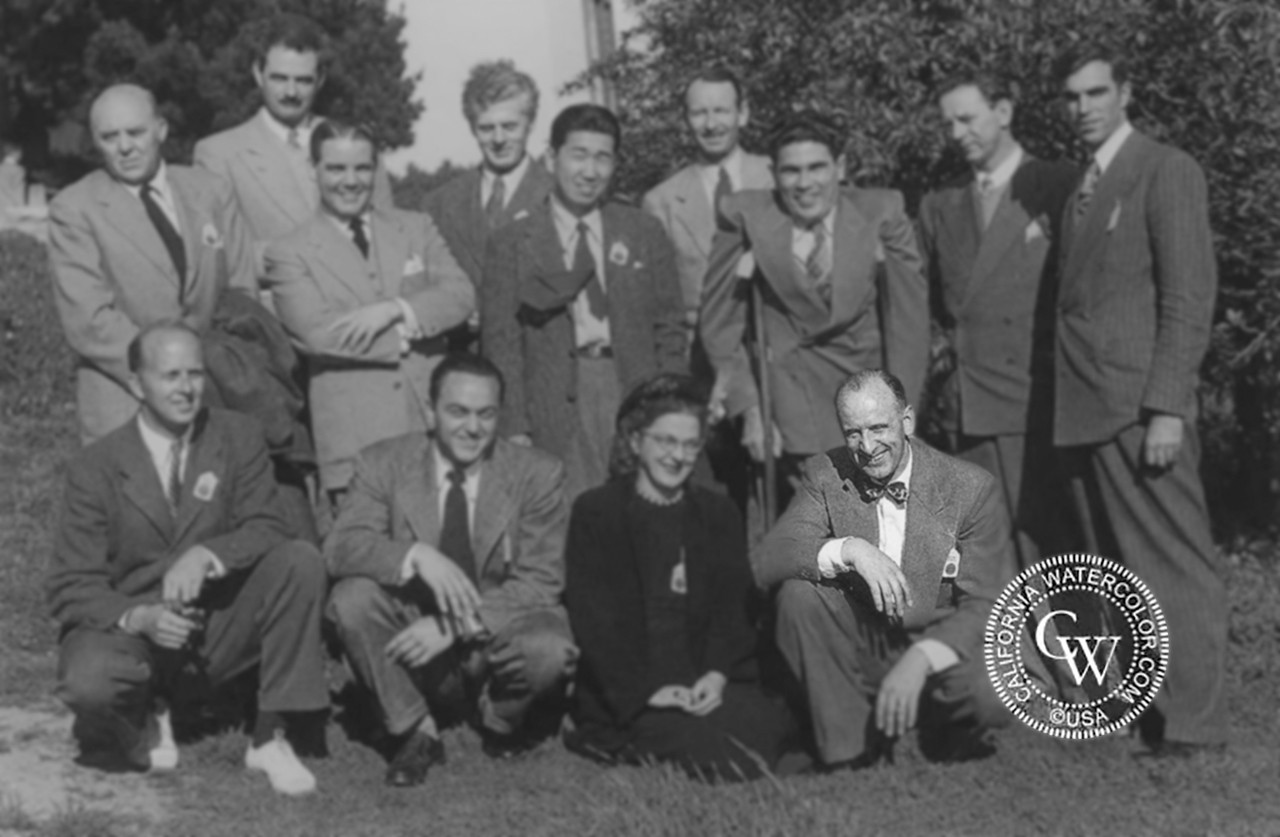 |
| Photograph of the California Water Color Society in 1948 highlighting George Gibson |
Glas-Glowing Lights
George Gibson was born in Edinburgh, Scotland in 1904 and spent his early years falling in love with painting and the arts in the rain-washed village of Fochabers. When he came of college age, he studied at the Edinburgh College of Art and later the Glasgow School of Art. He also earned a reputation painting scenery for the Royal Theater in Glasgow. Perhaps desiring sunnier environs—a recurring motivator for immigrants to California—Gibson moved to the United States in 1930 and settled in Los Angeles to work in scenery painting for the growing film business. He began by continuing his education at the Chouinard Art Institute, practically a requirement for the group of artists that would come to represent the California Watercolor Style of the 1930s and ‘40s. It was there that he met and befriended other artists from the movement like Emil Kosa Jr.
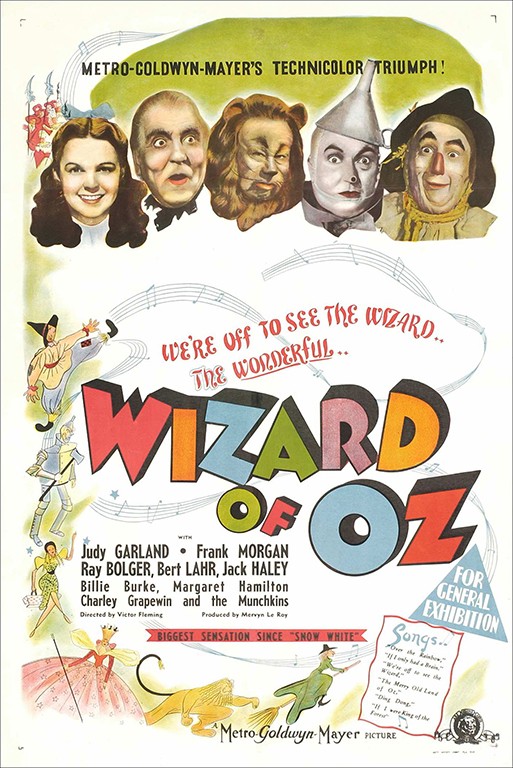 |
| Film poster for The Wizard of Oz (1939) |
Scene Subculture
In 1934 Gibson was hired on to work at Metro Goldwyn Mayer (MGM) where he eventually became the head of their Scenic Art Department. Even the earliest films that he created backgrounds for are ones that remain household names. The 1939 Wizard of Oz is the best remembered of these. His most impressive set painting was arguably a reproduction of Michelangelo’s frescoes in the Sistine Chapel for The Shoes of the Fisherman (1968). They were realistic enough that several cardinals believed the film had been filmed in situ against their wishes. Sadly, like many of his contemporaries he did not earn much of a reputation for these paintings, as the film industry wanted viewers to believe that they were filming on location rather than on a Hollywood set. At the same time as Gibson worked for MGM, he spent his weekends painting watercolors en plain air. He became a member of several organizations and even headed the California Water Color Society. After retiring from MGM in 1969 with over 100 films under his belt he continued to paint until he passed away on March 28, 2001, in San Luis Obispo, California.
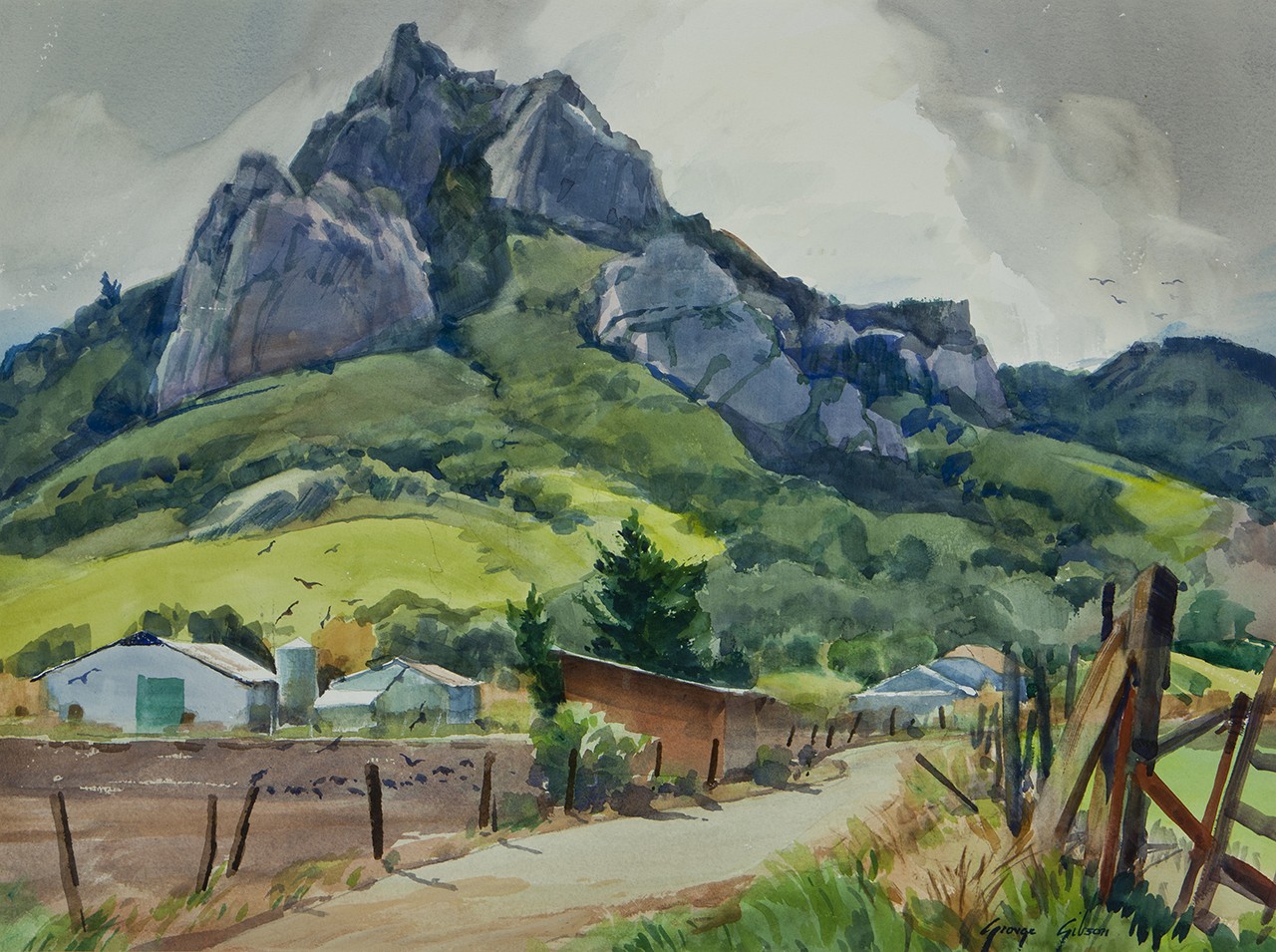 |
Hollister Spring, mid 20th Century
George Gibson (Scottish, 1904 - 2001); California
Watercolor on paper; 17 1/2 × 23 1/2 in.
2018.6.8
Ann and Bill Cullen Memorial Collection |
Ranch Hands Painting Ranches
Gibson was particularly drawn towards rural scenes. Being so involved in the film industry, the locales that he chose for his paintings were naturally ones associated with moviemaking. He was known to paint at the Paramount Movie Ranch, 20th Century Fox Movie Ranch, and the Placeritos Ranch which is now better-known as the Melody Ranch. As already mentioned, Gibson was a good friend of Emil Kosa Jr. Kosa worked for 20th Century Fox and the two would often paint at these sites together. One finds paintings which are very near to each other in subject matter but vary in composition and other ways in which the artists’ styles differed. Though neither of the paintings in this collection was painted at one of these ranches, they are very similar to Gibson works from those sites.
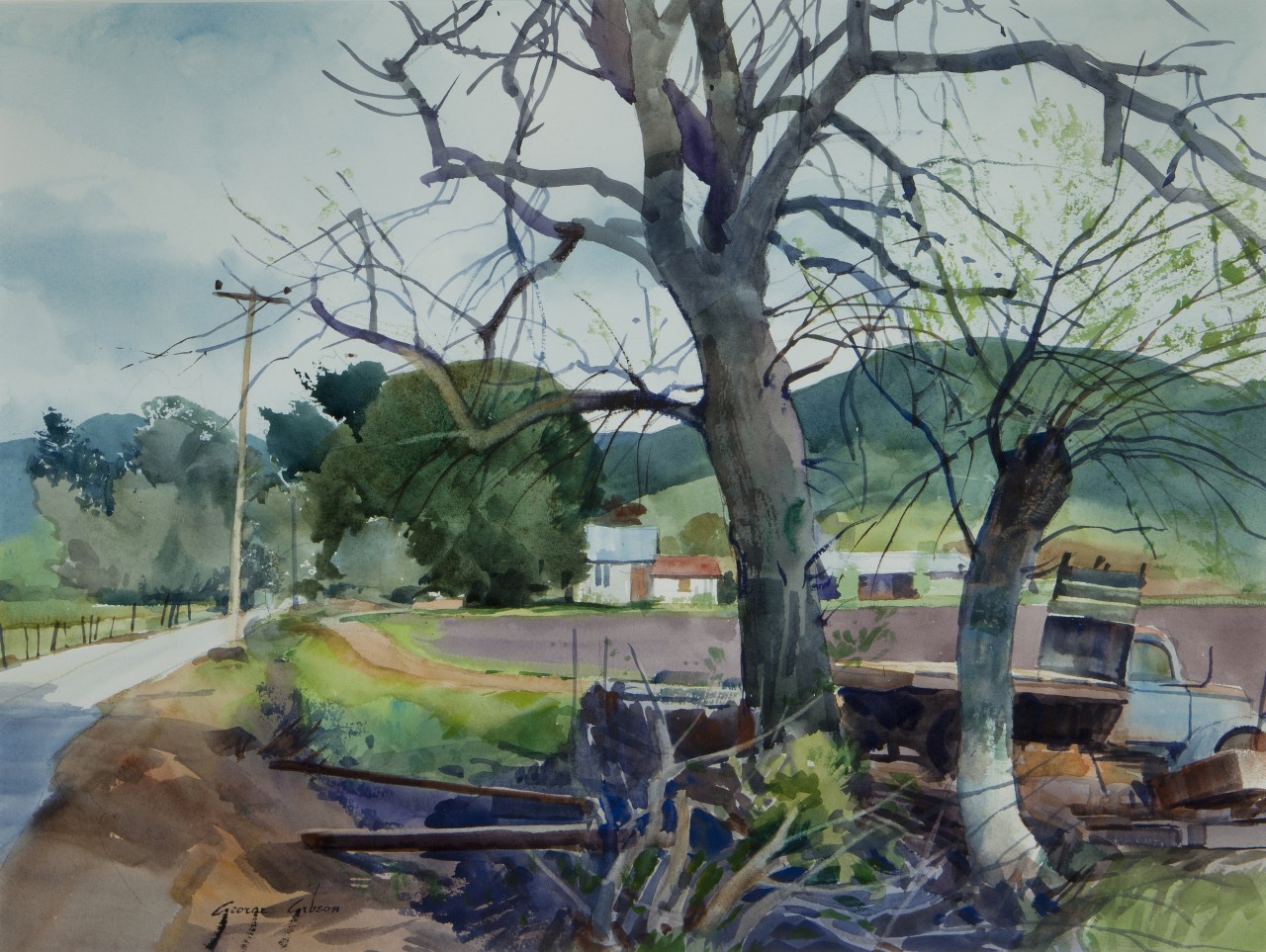 |
On the Road to Paso, mid to late 20th Century
George Gibson (Scottish, 1904-2001); California
Watercolor on paper; 18 1/4 × 24 in.
2018.6.9
Ann and Bill Cullen Memorial Collection |
Two Roads Somewhere
Both works appear to draw heavily from the Great Depression. Beaten down and rusted vehicles, crow-pecked fields, and listlessly listing fence posts set somber tones that are further reinforced by Gibson’s largely grey palette. These same themes were very well-imbued into Kosa’s works of the 1930s, which similarly managed to be alluring through the use of color—in both of Gibson’s paintings we see brilliant greens juxtaposed against the aforementioned greys to great effect. These works were painted much later than the ‘30s though, likely in the ‘50s or ‘60s. These genre scenes, depicting quiet, frozen moments of time contrast harshly against the oft-vibrant scenes that Gibson painted for moving pictures. It is perhaps not at all surprising that he would seek to create entirely different works in his spare time.
Text and images may be under copyright. Please contact Collection Department for permission to use. References are available on request. Information subject to change upon further research.






Comments